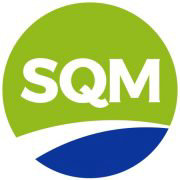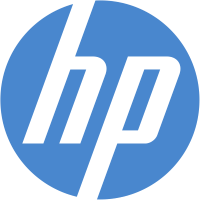
Bulten AB
STO:BULTEN


| US |

|
Johnson & Johnson
NYSE:JNJ
|
Pharmaceuticals
|
| US |

|
Berkshire Hathaway Inc
NYSE:BRK.A
|
Financial Services
|
| US |

|
Bank of America Corp
NYSE:BAC
|
Banking
|
| CL |

|
Sociedad Quimica y Minera de Chile SA
NYSE:SQM
|
Chemicals
|
| US |

|
General Motors Co
NYSE:GM
|
Automobiles
|
| US |

|
HP Inc
NYSE:HPQ
|
Technology
|
| US |

|
CVS Health Corp
NYSE:CVS
|
Health Care
|
| US |

|
General Electric Co
NYSE:GE
|
Industrial Conglomerates
|
| US |

|
Nike Inc
NYSE:NKE
|
Textiles, Apparel & Luxury Goods
|
| US |

|
Visa Inc
NYSE:V
|
Technology
|
| CN |

|
Alibaba Group Holding Ltd
NYSE:BABA
|
Retail
|
| US |

|
3M Co
NYSE:MMM
|
Industrial Conglomerates
|
| US |

|
Coca-Cola Co
NYSE:KO
|
Beverages
|
| US |

|
Procter & Gamble Co
NYSE:PG
|
Consumer products
|
| US |

|
Walmart Inc
NYSE:WMT
|
Retail
|
| US |

|
Verizon Communications Inc
NYSE:VZ
|
Telecommunication
|
Utilize notes to systematically review your investment decisions. By reflecting on past outcomes, you can discern effective strategies and identify those that underperformed. This continuous feedback loop enables you to adapt and refine your approach, optimizing for future success.
Each note serves as a learning point, offering insights into your decision-making processes. Over time, you'll accumulate a personalized database of knowledge, enhancing your ability to make informed decisions quickly and effectively.
With a comprehensive record of your investment history at your fingertips, you can compare current opportunities against past experiences. This not only bolsters your confidence but also ensures that each decision is grounded in a well-documented rationale.
Do you really want to delete this note?
This action cannot be undone.

| 52 Week Range |
61.3809
91.5
|
| Price Target |
|
We'll email you a reminder when the closing price reaches SEK.
Choose the stock you wish to monitor with a price alert.

|
Johnson & Johnson
NYSE:JNJ
|
US |

|
Berkshire Hathaway Inc
NYSE:BRK.A
|
US |

|
Bank of America Corp
NYSE:BAC
|
US |

|
Sociedad Quimica y Minera de Chile SA
NYSE:SQM
|
CL |

|
General Motors Co
NYSE:GM
|
US |

|
HP Inc
NYSE:HPQ
|
US |

|
CVS Health Corp
NYSE:CVS
|
US |

|
General Electric Co
NYSE:GE
|
US |

|
Nike Inc
NYSE:NKE
|
US |

|
Visa Inc
NYSE:V
|
US |

|
Alibaba Group Holding Ltd
NYSE:BABA
|
CN |

|
3M Co
NYSE:MMM
|
US |

|
Coca-Cola Co
NYSE:KO
|
US |

|
Procter & Gamble Co
NYSE:PG
|
US |

|
Walmart Inc
NYSE:WMT
|
US |

|
Verizon Communications Inc
NYSE:VZ
|
US |
This alert will be permanently deleted.
 Bulten AB
Bulten AB






 You don't have any saved screeners yet
You don't have any saved screeners yet

Hello, and welcome to Bulten's 2019 Q1 presentation. My name is Kamilla Oresvärd, Senior Vice President, Corporate Communications. Presenting the report today are Bulten's President and CEO, Anders Nyström; and our Executive Vice President and CFO, Helena Wennerström. [Operator Instructions] Please go ahead, Anders.
Thank you, Kamilla. The agenda for today will be a brief overview of Bulten, the market development, the outcome for the first quarter and some comments about the future. But let me first give you some quick reflections about my first month with Bulten, the report is really in the presentation.I took on my position as CEO on the 8th of February. I had a good impression of the company already before joining. And that impression is even stronger now, I have to say. The company's spirit is quite unique with a sense of pride among the employees and this applies to all the categories of employees. The occupational pride among people like machine operators and production specialists is the best I've seen outside of Japan. This gives us continuity and preserves our know-how. Bulten has also a lot of credibility with the customers and the brand is very strong. They say that we're adding value to the business. And we're investing in our future and we have a strong financial position. Our FSP concept is obviously an important element in our growth and explains much on our successful track record. We have a very solid foundation to continue to build the company from in the years to come. Before going into the quarter results, let me just take you through some of the basic facts about Bulten. On to Page 4. Bulten has a leading, well-positioned operation with a global presence. There are actually not many in the industry that can offer local content in both Europe, U.S., China and Russia. We have today, the largest customer operation in the industry in a low-cost country and we're planning to expand that further. We balance our production between approximately 40% outsourcing and 60% in-source. And we can thereby be flexible and cost-efficient. On to Page 5. As you can see in the slide, Bulten has a broad customer base. Carmakers are the largest customer group. And Bulten's 3 largest customers are Ford, Jaguar Land Rover and Volvo Cars. On to Page 5 (sic) [ Page 6 ]. First quarter in the market development. And to the next page, that's actually Page 7. As we commented in our report today, the industry has continued to be quite volatile also in the beginning of 2019. In Europe, car sales have decreased each month since December according to ACEA, as you may see in the top right-hand chart of the slide. This is due to several factors. The introduction of the new WLTP emission regulations caused car sales to accelerate in the first half of 2018 and then slow down in the second half. Also concerns about Brexit, that's had an impact, especially in the U.K. And as you can see in the lower right-hand graph, car sales in many global key markets also has continued down, especially, in China. China is an unpredictable market that historically has had bigger swings up and down than other markets. However, in the long-term China has huge potential for Bulten being the largest car market in the world. In the first quarter, raw material prices have remained in the same high-level as in quarter 4 last year with no further increases announced. On to Page 8. Production of cars is really the relevant statistic for Bulten as we look at our sales markets. LMC Automotive is forecasting a 0.5% reduction in light vehicle production for the full year in 2019 compared to 2018. Heavy commercial vehicles is forecasted to grow by 1.6%. Bulten's customer mix, that means, forecasted market reduction of 0.2%. As Bulten has contracts not yet in production, we believe that we still have good opportunities for gaining market share during this year, 2019. And the longer perspective, LMC Automotive estimates a bounce back for production of light vehicles in Europe in the years to come, with an increase of 3% in '20 and 2.2% in '21. Similarly, for heavy commercial vehicles, they estimate an increase of production of 4.1% for both '20 and '21. On to Page 9. Some words about our market-end position. Bulten's market share in Europe was 18% during 2018. We've defended our position as the leading FSP supplier quite well and we've increased our market share by 5 percentage points in Europe from 60% to 65% during last year. On Page 10, this is an illustration of going forward. In this slide you can see that the growth that we're projecting is substantiated by actual contracts and this is important to note. Changes in demand driven by macroeconomic effects, positive and negative, will have an impact on this, but the contracts are there. You can also see that 2 of our last 3 business wins were for electric vehicles, which is an acknowledgment of our technical position and ability to supply those new vehicle concepts. And now over to Helena for the first quarter.
Thank you, Anders. Now, we will talk about the first quarter and operational highlights. Going to Page 12. New accounting principles IFRS 16 are applied from 1st of January, 2019, more about that on next slide. Bulten shares of sales were SEK 810 million in the quarter, down 5.1% compared to same quarter last year. And our EBIT amounted to SEK 58 million.The operating margin was lower compared to comparable quarter last year and affecting lower volumes, restructuring cost and higher raw material prices. Still, it then adjusted 7.1% and adjusted for restructuring cost in China at 7.3%, which is in line with our financial target of 7%. We continue to take new contracts during the quarter as we won a new FSP contract for new vehicle program with an annual value of EUR 13 million.Page 13. As many other companies, Bulten is affected by new accounting principles, thus IFRS 16 as 1st of January, 2019. Bulten's lease agreements mainly consist of rights of use for premises and equipment. At Bulten, this has some minor effect, especially on the income statement. And the major thing is on the balance sheet as well as the key indicators that are related to the balance sheet. Here's some comments, let's go back to the income statement first. The new principle had a slightly positive effect on the EBIT level by SEK 1 million.However, looking at our EBITDA, it is affected by SEK 10 million positively, mostly related to rental contract. Depreciation has increased and grown the same amount, SEK 10 million. So all in all, our audits before and after tax is almost neutrally affected by new accounting principles. Now back to the balance sheet, the lease liabilities has affected the net debt by SEK 214 million, totaling SEK 501 million in the end of the quarter, and return on capital employed is negatively impacted by 0.6 percentage points and went from 11.5% to 10.9%. And our equity ratio close to 58% and would have been 63% if the old principle was used. Page 14. I'll comment on the net sales and order intake. Sales for the quarter were down 5.1% and adjusted for currency the organic growth was 9%. The market has been volatile as we've mentioned before. But as importantly, exceptionally strong first quarter 2019, booked mostly for ramp up of contracts. And in the first quarter 2019, we were impacted negative by our customer mix and the fact that none of our new contracts were scheduled through back in the first quarter to offset the market downturn. Looking at our order intake it was down 5.9%, this is, of course, also result of the market's volatility and the customer mix as well as strong order intake previous year. Page 15. Now back to our earnings performance. Our EBIT margin for the first quarter amounted to 7.1% compared to 7.8% comparable quarter last year. We're looking at the underlying profitability, which is building in currency and restructuring cost related to the relocation and production in China. The difference is much lower, with the margin of 7% in the first quarter of 2019 compared to 7.2% the previous year. This shows good cost control, taking into account lower volumes and the higher level of raw material prices compared to a year ago. On the right chart, our earnings on EPS level was down in the quarter for the same reason. Page 16. The cash flow has been affected mainly by operational result, but we've also turned up some net working capital, impacting cash flow. The inventory has increased significantly the last few quarters, more about that in the next slide. We have a high investment level as we're in phase preparing for growth. And our investments in efficiency continues as we aim to become the industry's most cost-effective process manufacturer. Our balance sheet and financial position remain strong and they have a net debt by the end of the quarter at SEK 501 million or SEK 252 million excluding lease liabilities. Now some add-on comments about the increasing inventory since a year ago. Our inventory has increased, mainly this last few quarters. And in the left chart, you can see the reasons explaining the increase compared to a year ago. The main explanations are volume demand, nonrealization of inventory levels and the new ramp up contracts, but also preparation for Brexit and relocation in China. With an inventory of SEK 731 million at the end of the quarter, we are now at the new inventory level of over 20% of net sales as shown in the right chart. Activities are ongoing to normalize and improve the control of inventory level. Page 18. We have return on capital employed of 10.9%, mainly affected by the profitability level and the high investment level, but also by effect of implementing the new accounting principles, IFRS 16. And if you exclude the lease liabilities, we would end up being 11.5%. Also our return on equities are impacted by this and amount to 9%. Capital turnover times are down to 1.6x, which is lower compared to the full year 2018, mainly due to same reason that I've already mentioned. Page 19. On this Slide, we continue to give you some short guidelines regarding some key figures for Bulten, but as always, these guidelines are not to be considered as financial targets. The average net working capital in relation to 12-month sales amounted to 26.5%, which is above our guidance and the main reason are due to volume demand, nonrealization of inventory levels and the new ramp up contracts, but also the preparation for Brexit and relocation in China. Capital expenditures as percentage of 12 months sales were at the level of 5.2%, an evidence that we invest in future growth activities and we predict that we would end up over this level in the coming years, more about that in the next slide. Depreciation of 3% of 12 months sales, excluding lease liabilities, is within the range of our guidance. And now the average tax rate was 28.3% rolling 12 months, which is slightly above our guidance. However, the tax rate was 25.3% in the quarter and it really vary from quarter-to-quarter. Page 20. Just a short review of our investment strategy going forward. Our guidance is to invest 2% to 3% of 12 months sales into daily business. On top of that, we will invest more in the years to come, as previously announced. We will invest in new capacity, value-added production as well as new production plant in Poland.This investment has, however, been delayed due to negotiations regarding land development and building. And the planned surface treatment line in Poland is also delayed of same reason. We've announced the move of our production facility in China from Beijing to Tianjin, talk more about that on next slide. These investments will improve Bulten's production efficiencies even further. At the end of 2018, we decided to relocate the operations in China from Beijing to Tianjin, with associated investment of SEK 25 million. Additionally to that, we're also expecting structural cost about SEK 16 million to SEK 20 million during the moving period as the main part during the second and third quarter 2019. The move has started and will be finalized by the end of 2019. And this will strengthen our position in China and will enable further growth opportunities. And now on Page 22, some comments about our financial key ratios in the relation to finance and financial targets. And in this perspective, we're looking at the sake of excluding the leasing liabilities and restructuring costs in China. Even though our net sales were down in the quarter, our rolling 12-month sales were up over 5%, which is above industrial growth. And we continue to have a solid profitability with an operating margin of 6.5% on a rolling 12 months basis. Even with tough raw material pricing situation and the volatile market has made environment more challenging. However, the quarter ended at 7.2%, which is in line with our target. The return on capital employed was 11.6%, which is lower than our target due to the lower profitability level and higher investment level.And now back to Anders.
Thank you, Helena. And we turn to Page 24 to look at the focus areas of 2019. Even though we've seen a more volatile market in the last few months, Bulten will ramp up previously won contracts to offset the weak markets. Our margin development indicates good cost control and we continue to secure efficient production. We plan to invest in further growth in Poland, our increased production capacity investment is delayed, but still our focus for 2019. And our Chinese relocation is underway. Our establishment in the U.S. also continues. As always, we aim for new FSP contracts during the year. We continue to promote and develop innovation and sustainability work and to build our already strong corporate culture. And this concludes our presentation and we're ready for Q&A.
[Operator Instructions] And our first question is from Kenneth Toll from Carnegie.
So can you tell us more a little bit about the timing of those new contracts that you are ramping up during 2019? Are they -- do you think they would add more volumes towards the end of the year? Or when do they start to kick in, if I understand that there were not huge effects in the first quarter.
That's true, it's not a huge effect in the first or second quarter actually and they will start to kick in, in the second half of '19.
Okay. Great. And then...
And then gradually over '20 and '21, as you can see in the slide.
Okay. Great. Then in -- you talked about new FSP contracts that you want to win those obviously, but are there such contracts up for grabs in 2019?
We have good reason to believe that there are more contracts up for grabs. We are discussing with customers, yes. So there's a good chance.
Okay. And are those then existing customers that want to move more to FSP to that concept instead of the traditional one? Or are there new customers that you don't have any business with currently?
In the interest of customer confidentiality, I won't comment on which customers or customer groups that is.
[Operator Instructions] Our next question is from Mats Liss from Kepler Cheuvreux.
Just coming back to the FSP contracts there. You mentioned the delay in the Polish capacity build there. And do you have any, or do you need that plant to be finished before you take on more contracts? Or do you have sort of available capacity to ramp up the contracts you have on hand?
The answer is actually no. We can contain that within the capacity that we have.
So you don't need Poland to...
Poland in its first step is primarily in efficiency with moving operations in-house that are currently outsourced. So from a capacity standpoint, we don't have the immediate need for the Polish plant, no.
And maybe if you could update me on why the project is delayed? What is the...
Yes. That's basically we're engaged in negotiations with local authorities and even national authorities in Poland. And as you can appreciate, it's somewhat difficult to control a process where you negotiate with authorities. And it has taken longer than previously estimated, but we're all working hard on getting them finalized as quickly as possible.
And they have -- well -- the problem is you need approval to continue with permits for some -- I mean, what is...
Permits, you mean?
Yes. No, it's not about permits, it's about purchase of the land.
Okay. Is it the pricing issue or something like that or is it more like...
Yes. I really -- in the interest of preserving that negotiation and then to preserving our interest in that, I won't comment on the reasons. So as you can probably understand.
Yes. Okay. And then you mentioned that the fee contracts there will be ramped up during second half and should we expect the second quarter to be at about the same level. I guess indicates the state level with the order intake, is that something -- will you sort of keep capacity, production capacity at the same level during the second quarter? Do you expect to do that?
Production capacity will be at the same level. And we, basically what we have done since the market slowdown is that we've normalized utilization of production capacity going away from over time, and basically, over utilization of our assets. So, yes. The answer is, yes.
Okay. Well, you mentioned that raw material prices have stabilized and you haven't seen any change since last autumn. Have you been able to sort of increase prices as you wish or is there still potential there to improve going forward?
I would do that in line with the contracts that we have. And I think, it has been explained previously that there is a time lag in settling pricing and we have done that too. For the most part with our customers, that's been settled. And as you say, we don't see any warnings on the horizon when it comes to additional raw material price increases, it's fairly stable right now.
And our next question is from Kenneth Toll from Carnegie.
Just a question on the balance sheet. Now with these accounting standard changes and so on, your net debt increased quite a bit. You also have some heavy CapEx plans ahead of you and you're buying back shares. Now those share buybacks have not been massive, but still do you think you can -- are able to continue buying back shares going forward?
Absolutely. And we're still asking for that in the AGM today. So that has been our plan, so to have that opportunity.
And there seems to be no further questions at this time. So I will hand the word back to the speakers for any final comments.
So I would just like to say thank you to everyone for spending time with us this afternoon.
Okay. Thank you.
This now concludes our conference call. Thank you all for attending. You may now disconnect your lines.